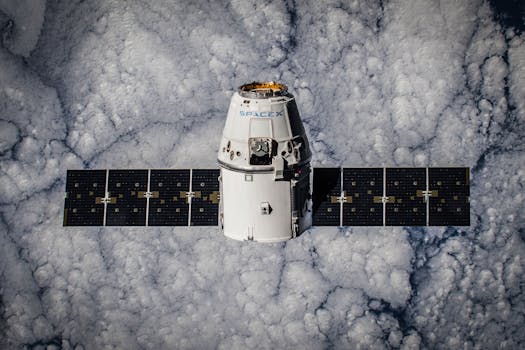
Breaking Barriers: How Recent Developments are Transforming Satellite Communication
Satellite communication has been a vital part of the global communication infrastructure for decades. However, recent developments in Satellite Communication are breaking barriers and transforming the industry in unprecedented ways. From advancements in satellite technology to the emergence of new business models, the satellite communication industry is undergoing a significant transformation.
One of the key drivers of this transformation is the increasing demand for high-speed and low-latency communication services. The growing need for global connectivity, driven by the rise of cloud computing, big data, and the Internet of Things (IoT), has created new opportunities for satellite communication providers. Recent developments in satellite technology, such as the launch of high-throughput satellites (HTS) and the development of advanced modulation techniques, have enabled the delivery of faster and more reliable communication services.
Advancements in Satellite Technology
Recent advancements in satellite technology have been instrumental in transforming the satellite communication industry. The launch of HTS, such as Intelsat’s EpicNG and ViaSat’s ViaSat-2, has enabled the delivery of high-speed communication services with throughputs of up to 1 Terabit per second. These satellites use advanced technologies, such as spot beams and frequency reuse, to achieve higher throughputs and more efficient use of bandwidth.
In addition to HTS, the development of advanced modulation techniques, such as 256AM (Amplitude and Phase Modulation) and 512AM, has enabled the delivery of faster and more reliable communication services. These techniques allow for more efficient use of bandwidth and enable the transmission of larger amounts of data.
New Business Models and Emerging Trends
The satellite communication industry is also witnessing the emergence of new business models and trends. One of the most significant trends is the growth of the Low Earth Orbit (LEO) satellite market. LEO satellites, such as those launched by OneWeb and SpaceX, offer lower latency and higher throughputs than traditional Geostationary Orbit (GEO) satellites.
Another emerging trend is the development of flat-panel antennas, which enable the delivery of high-speed communication services with smaller and more compact antennas. These antennas use advanced technologies, such as phased arrays and beamforming, to achieve higher throughputs and more efficient use of bandwidth.
Challenges and Opportunities
While recent developments in satellite communication are breaking barriers and transforming the industry, there are also challenges and opportunities that need to be addressed. One of the key challenges is the need for more spectrum and bandwidth to support the growing demand for high-speed communication services.
Another challenge is the need for more efficient and cost-effective launch systems to support the deployment of new satellites. The development of reusable launch systems, such as those launched by SpaceX and Blue Origin, is helping to address this challenge and reduce the cost of launching satellites into orbit.
Despite these challenges, the satellite communication industry is poised for significant growth and transformation in the coming years. The increasing demand for global connectivity, driven by the rise of cloud computing, big data, and the IoT, will continue to drive the need for high-speed and low-latency communication services.
In conclusion, recent developments in Satellite Communication are breaking barriers and transforming the industry in unprecedented ways. From advancements in satellite technology to the emergence of new business models and trends, the satellite communication industry is undergoing a significant transformation.





